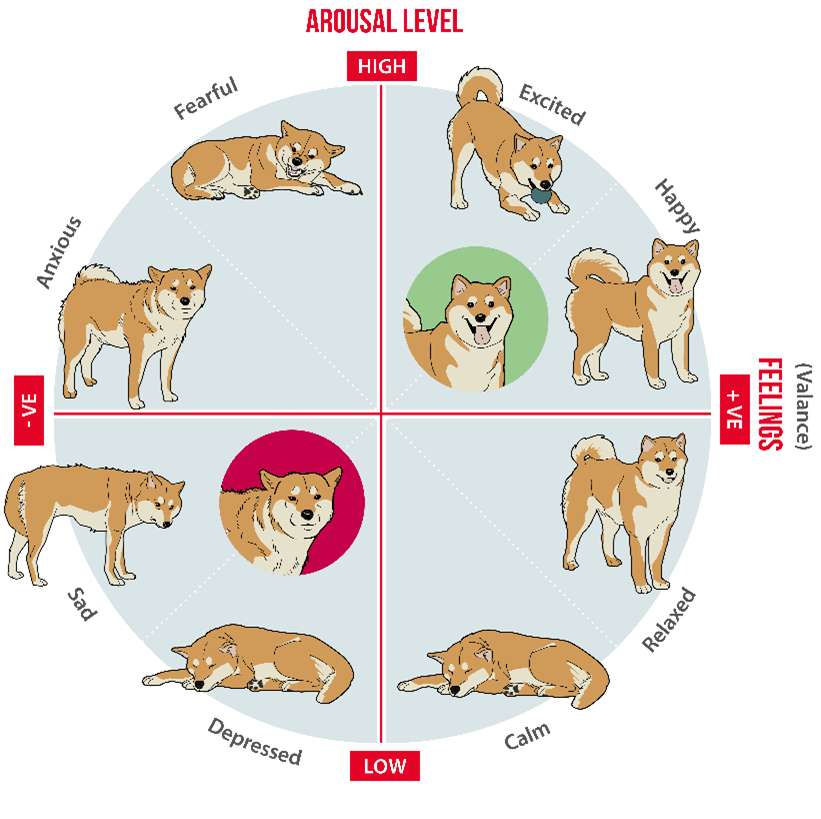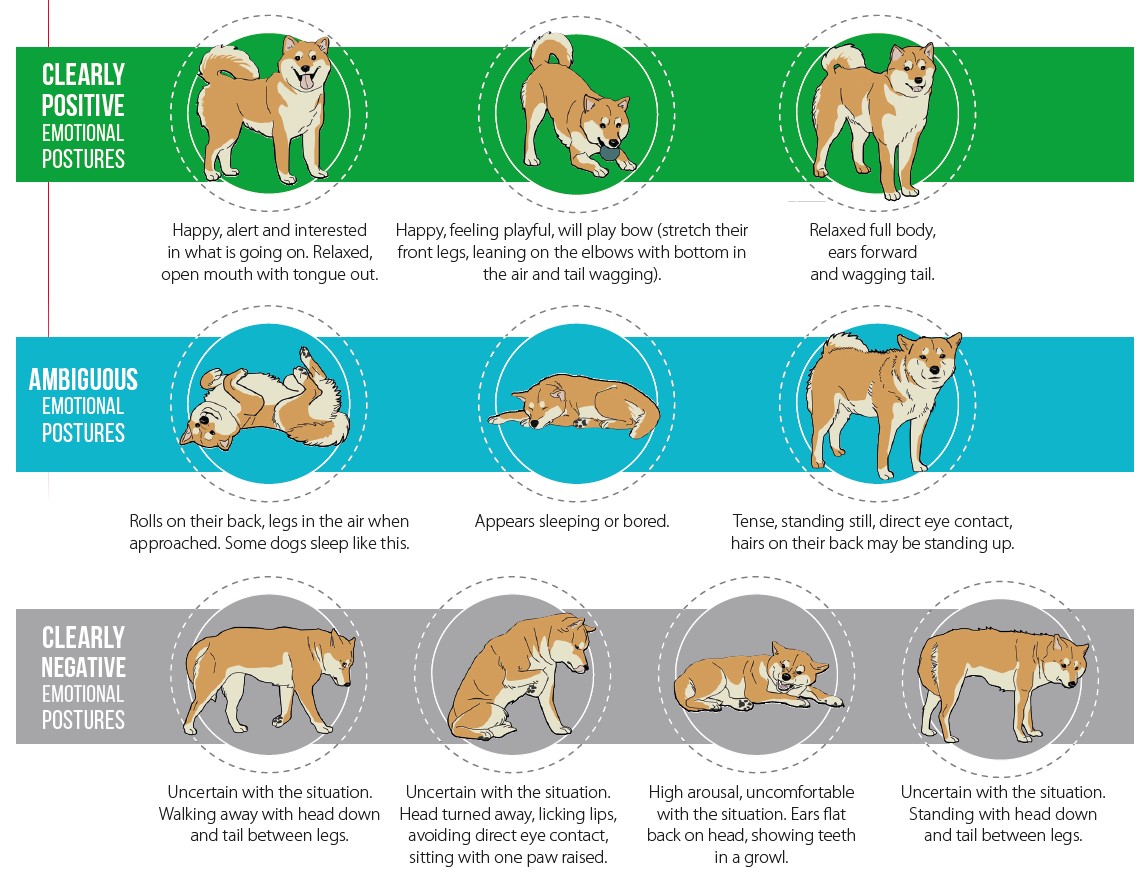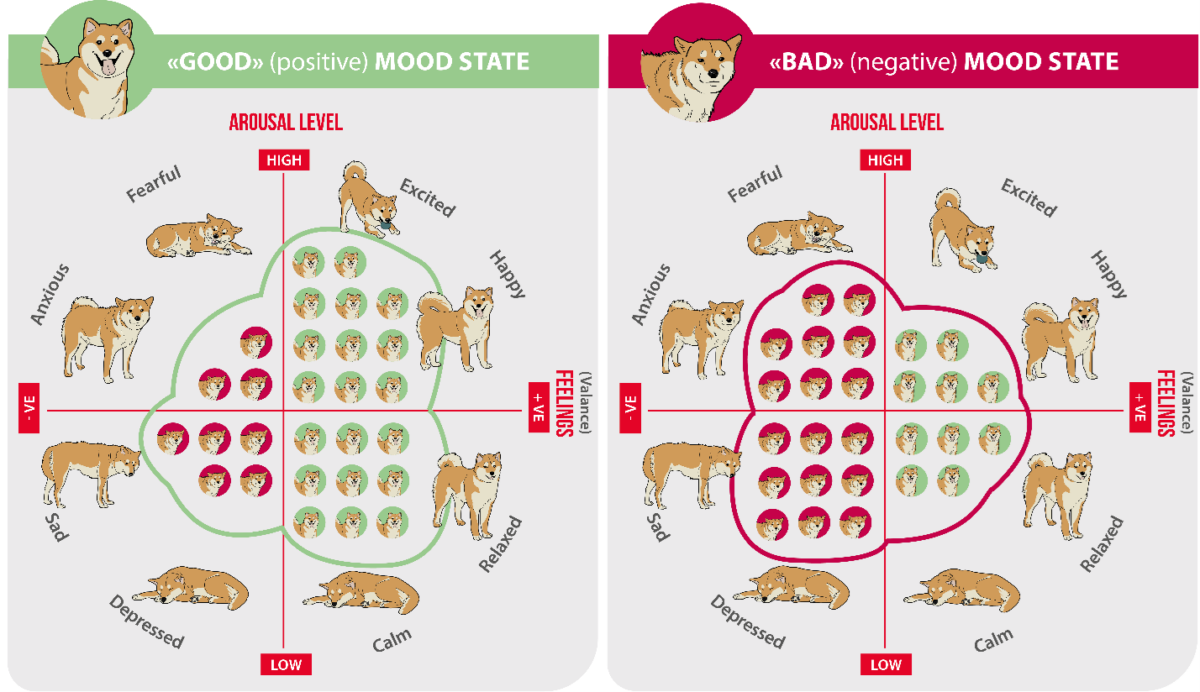Blog | Reading Time 5 minutes
Emotions, body language and mood: how well do you know your dog?
Behavioral problems are common among our canine companions and behavioral problems often stem from emotional problems. Just like humans, dogs experience anxiety mainly related to separation, fear and aging. Aggression, excessive barking, restlessness, compulsive and destructive behaviours are all signs of fear and anxiety in dogs. It is something that all dogs may experience from time to time, but if high levels of anxiety are left unresolved, a dog can develop an anxiety disorder. These disorders can not only negatively affect a dog’s physical health and wellbeing but also the relationship with the owner and the entire family’s quality of life.
Emotions and moods, what are they?
We are all familiar with our emotional states, such as joy, happiness, sadness, loneliness, fear and pain. Every emotional state has two fundamental properties: a feeling state and an arousal level. Feeling states are on a spectrum, ranging from as happy as you could possibly be, to as unhappy as you could possibly be. Every feeling also has an arousal level, ranging from as excited as you could possibly be, to a calm and relaxed mid-ground, through to as terrified as you could possibly be. Emotional states can change very quickly from one moment to the next. Think about how quickly your dog’s emotional state changes to excitement and enthusiasm when they believe they are going out for a walk. Then, how quickly does it change to sadness and disappointment when they discover they are not going for a walk? At any given point in time, you can estimate your own emotional state according to how you feel.

Our emotional well-being is, in fact, a measure of our current mood state. Dogs experience a wide range of emotional states just like we do. These different emotional states combine to form a mood state over time. Poor mood states can lead to welfare problems in dogs and contribute to behavioral problems. Mood states are persistent because they are formed as an average of all our emotional states over time and are resistant to change. This explains why anxiety and depression are classified as mood state disorders.
Body language
Body language can sometimes be difficult to interpret. Often, a dog’s personality and history can shape their body language and how they communicate their feelings. They may range from subtle changes in facial expression or body posture, to more obvious emotional cues such as unhappy snarling or excited tail wagging. The same body postures may have different meanings in different dogs, so it is important to understand your dog and understand that each dog is individual. For example, in confident and sociable dogs, rolling on their back may indicate the desire for a tummy rub, whilst in shy and unsociable dogs, it may indicate discomfort and a desire to avoid contact. Here are the top 10 most common postures in all dog breeds:

Track your dog’s emotions
If you record your emotional state several times a day over several days, you will end up with a reasonable average for all your emotional states over that period of time. This kind of subjective ‘self-report’ estimate of ‘how you are feeling’ is routinely used by human mental health professionals all the time and can be applied to your dog. Over a period of 7 to 10 days, make an estimate of your dog’s emotional state 3 times per day and plot it on the mood scale. Once you have completed this, draw a line around all the emotional scores you have made to create a border to represent your dog’s mood state. Shown below is an example of a good mood state (left) and a poor mood state (right).

If you are unsure of any ambiguous postures or emotions, pictures tell a thousand words. Take a picture of your dog’s face and posture and keep a record. If you think your dog has a poor mood state or you are worried or confused about your dog’s emotional cues, seek professional behavioural support.
Conclusion
Understanding your dog’s emotional state and mood state can help you to recognize when their emotional well-being is at risk. Experiencing negative emotions over a long period of time can result in a poor mood state and can lead to anxiety and depression. Anxiety may affect each individual dog differently and can be a big concern for those of us who have developed close bonds with our dogs and want them to be happy. By educating ourselves about our dog’s emotional cues and needs, we can support overall well-being, seek help if needed and reinforce our special and unique bond with ‘man’s best friend’.
Use Lallemand’s interactive PetWAG (Pet Well-being Assessment Guide) tool to measure and record your dog’s mood state, https://petwag.lallemandanimalnutrition.com/.
This tool was developed with Robert Falconer-Taylor. Dr. Falconer-Taylor was veterinary director and head of education of the Centre of Applied Pet Ethology (COAPE).

Published Sep 29, 2024 | Updated Oct 2, 2024
Related articles
Need specific information?
Talk to an expert


